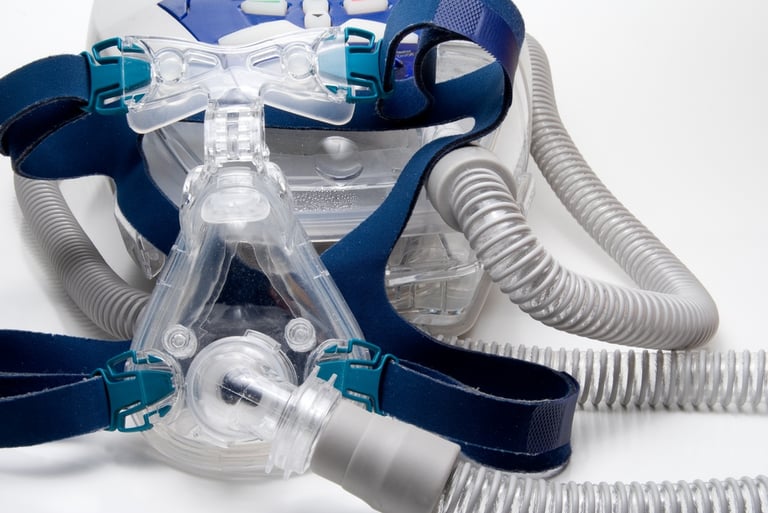 There are a variety of CPAP masks that are suitable for those who suffer from claustrophobia and anxiety. The best mask will match the particular needs of the patient while providing the proper amount of pressure to keep the airway open. The best mask is the one that works best for you.
There are a variety of CPAP masks that are suitable for those who suffer from claustrophobia and anxiety. The best mask will match the particular needs of the patient while providing the proper amount of pressure to keep the airway open. The best mask is the one that works best for you.
This article will discuss the different types of masks suitable for claustrophobia, the advantages and disadvantages of each and how to prepare for getting optimum results from the mask.
What is Claustrophobia?
The word claustrophobia comes from the Latin word claustrum which means “a shut in place” and the Greek word phobos meaning “fear.” Claustrophobia is the fear of being enclosed in a small space or room and having no escape.
It often results in panic attacks and is typically classified as an anxiety disorder. Claustrophobia is typically thought to have two key symptoms: fear of restriction and fear of suffocation.
Suffocation
Since claustrophobic patients often have a fear of suffocation, wearing a CPAP mask that covers their nose and/or mouth may be particularly difficult for them. Even with the pressurized air coming out of the hose into the mask, it still may feel like suffocation. CPAP masks are designed to put air into you, so suffocation is not possible.
Even when the air is not blowing, a person can breathe with the mask on their face. That sounds great but what about that panicky feeling that’s making you want to scream and run? CPAP companies have developed masks that address these claustrophobic symptoms.
Add Stress Hormones to the Mix
A person is prescribed CPAP when their breathing stops five times or more per hour. Some people with really severe cases have more than 100 apneas per hour. Every time a person experiences an apnea, oxygen is not able to get into the body because the airway is closed. The body goes into “fight or flight” mode and stress hormones are released into the bloodstream.
After months and years of experiencing these breathing stoppages many times per hour, every hour of every night, there are lots of stress hormones in the bloodstream.
When a person first starts on CPAP, the person will have high stress. Add this high stress to a person who has the fear of suffocating, and wearing CPAP makes it even harder for claustrophobic sufferers. Once CPAP is used, those stress hormones will subside.
Dealing with Fear
Even though a phobia is an excessive fear of something (in the case of claustrophobia, small places or the feeling of being trapped), and it is an illogical and irrational fear, it is still a fear nonetheless and must be dealt with as if it is a real threat. 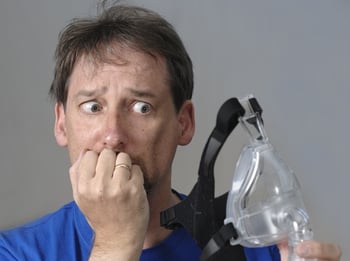
Naming and facing your fear takes away some of its power. What kind of fears do you have when you try to sleep with the CPAP mask?
Is it bothersome to have something on your face?
Did you have a bad experience with CPAP previously?
Are the straps holding the mask to your face in your line of sight?
Does the weight of the CPAP mask bother you?
Did you try on a CPAP mask and you couldn't breathe through it, causing you to have a panic attack?
If you can pinpoint what makes you fearful about the mask or CPAP machine, you can deal with the problem. The CPAP mask designers and companies have developed masks to address the various problem areas.
Densensitization
With fear of anything, if you have a chance to examine the object or situation, understanding develops and the object loses some of its power over you. A common technique for overcoming fear is to become familiar with it. Desensitization is the process of freeing someone from a phobia or neurosis by gradually exposing the person to the thing that is feared.
No matter what type of mask is best for you, you have to use it to receive the benefits of CPAP. To desensitize yourself, first pick up the mask. Hold it and examine it. Examine the different parts of the mask. It will have two or more parts to it. Look at how the parts attach to each other and to the hose.
Take the mask apart if you like, then put it back together. Find the small part that has holes in it. This is the exhalation port. This port allows carbon dioxide to be released so you do not suffocate.
Wearing the Mask While Awake
Hold just the mask (no hose attachment) up to your face for 10 seconds. If that’s too much for you, try 5 seconds. Breathe naturally. Do this repeatedly, and as you get more comfortable with the mask on your face, hold it against your face for longer periods of time. Once your fear has subsided while you are holding the mask against your face, now place the mask (using the headgear) on your face.
Wear the mask around the house while you do distracting activities, like watching TV, reading a book or anything that will divert your attention away from the mask. Wear the mask for longer and longer periods of time as you get used to the mask on your face.
Wearing the Mask Attached to the CPAP
Once you are comfortable with the mask on your face, you are ready to try hooking it to the CPAP machine while awake. Use the same desensitization technique while using the CPAP. Wear the mask with the air running while watching TV, reading a book, or whatever sedentary activity you prefer.
If you get panicky because of the air blowing, or if you feel like you are suffocating, keep in mind that you are not suffocating. The CPAP is giving you air, not taking it away. But that’s logical, and panic attacks are emotional. So do this when you feel panicked: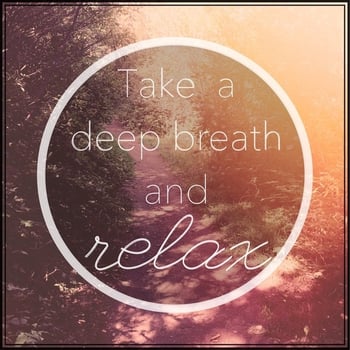
Close your eyes and take a deep breath, taking 5 seconds to breathe it in
Hold it for 5 seconds
Then breathe it out slowly for 5 seconds
Pause and don’t breathe for 5 seconds
Again take a deep slow breath in, taking 5 seconds to breathe it in
Hold it for 5 seconds
Breathe it out slowly for 5 seconds
Pause and don’t breathe for 5 seconds
Repeat this process until you relax
The idea is to get relaxed while having the mask on and the air pressure running. Try doing this breathing technique with the mask on and air blowing, but if it is too much for you, take off the mask and do the breathing exercises until you are relaxed. Then put on the mask with the air and do the breathing exercises.
The idea is to overcome your claustrophobia and fear of suffocation while the mask is on and the air blowing. Whatever it takes to get there, is what it takes. Try to remain calm and nonjudgmental. Breathing exercises are an excellent method for relaxing and will help you achieve your goals.
Types of Masks
There are three categories of CPAP masks: Nasal pillows, nasal masks, and full face masks. Each of these mask types have different shapes and cover different areas of the face.
A nasal pillows mask sits at the end of the nostrils
A nasal mask covers the nose
A full face mask covers the nose and mouth
Each of these mask types offer patients comfort and effective treatment, depending on their particular needs.
Nasal Pillows vs. Full Face Mask
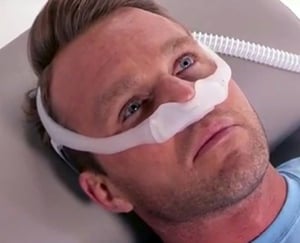 Nasal pillows are a minimal-contact mask that is designed with claustrophobic patients in mind. Pillows are made of soft plastic that sit at the end of your nostrils.
Nasal pillows are a minimal-contact mask that is designed with claustrophobic patients in mind. Pillows are made of soft plastic that sit at the end of your nostrils.
In the older designed models, the nasal pillows are attached to a hard frame, but the new models are comprised entirely of extremely light, soft and flexible silicone material that is very comfortable.
These pillows provide patients with a feeling of freedom, and lessen that closed-in feeling or fear of suffocation. There is nothing infringing upon your vision and you can wear nasal pillows while watching TV or any other activity.
Nasal pillows are not designed for mouth breathers. Mouth breathing is common in people who have untreated sleep apnea, and most people will close their mouths while asleep once they start using CPAP.
Certain medical conditions, such as nasal cavity structure, injury or deviated septum, may prevent people from breathing through their nose, and they must breathe through their mouth. In that case, pillows are not the ideal mask, unless a chin strap is worn to keep the mouth closed. If you cannot tolerate wearing a chin strap, you may need a full face mask.
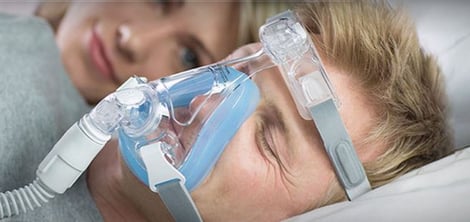 Full face masks cover both the nose and the mouth. This adds more contact with the face, but the newest models are light and have little-as-possible-contact with the face.
Full face masks cover both the nose and the mouth. This adds more contact with the face, but the newest models are light and have little-as-possible-contact with the face.
The mask is shaped in a triangle and fits over the nose and mouth, forming a seal to the skin. Even though you might think this would surely cause suffocation, if you examine the mask carefully you will see that the full face mask is designed with a valve that lets in fresh air from the outside when the CPAP air is not blowing, assuring that the user will not suffocate. Some mouth breathing people prefer the full face mask over the nasal pillows.
Summary
It is best when choosing a mask to try on all three types of masks. What is comfortable for one person will not be for another. Each person has his or her own preferences and needs. Once you get accustomed and comfortable with the mask and airflow, the panic attacks and anxiety will leave you. It does take time and adjustment. When you reach the point where you are sleeping at night with the CPAP, your quality of life will improve and you will see that it was all worth it. Don’t give up!
Sources:
Merriam Webster Dictionary
www.wikipedia.com
www.slep-apnea-guide.com
www.resmed.com
www.philipsrespironics.com
Image Credit:
www.shutterstock.com
www.resmed.com


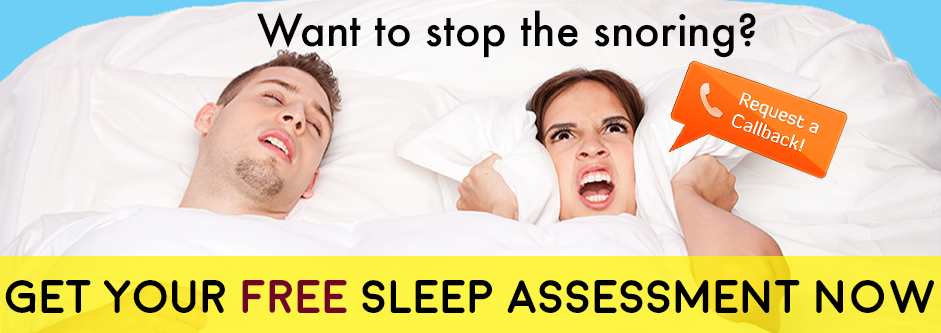






Leave a comment